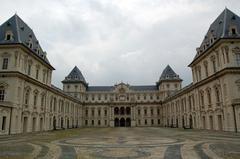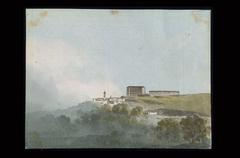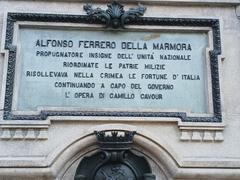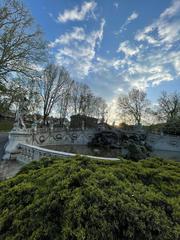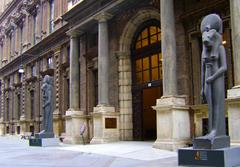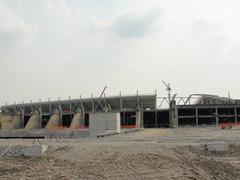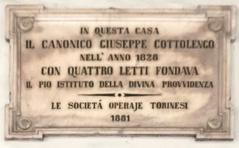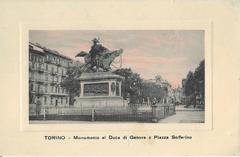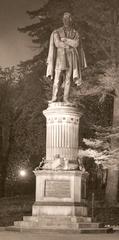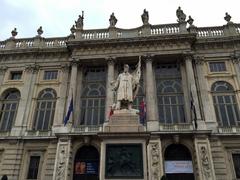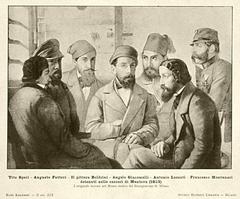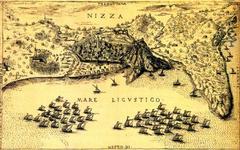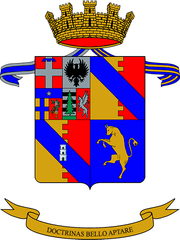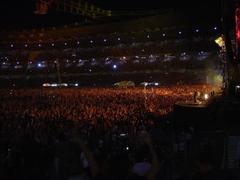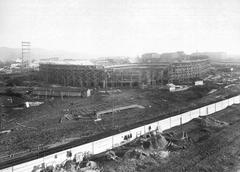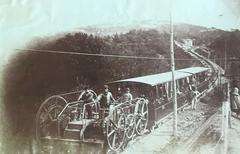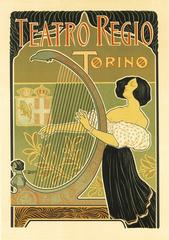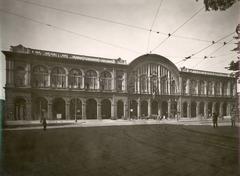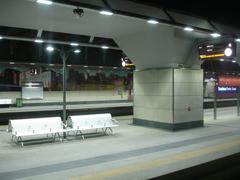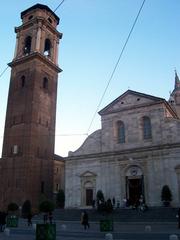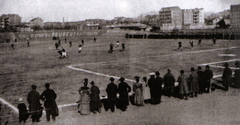Eremo Turin Visiting Hours, Tickets, and Historical Sites Guide
Date: 15/06/2025
Introduction: The Eremo di Superga and Turin’s Spiritual Heritage
Turin, Italy, is renowned for its rich blend of historical, spiritual, and cultural landmarks. Among these, the Eremo di Superga stands as a profound testament to monastic tradition, Baroque artistry, and the enduring spirit of contemplation. Perched atop Superga hill, the Eremo—also called Eremo dei Camaldolesi—offers a serene retreat with sweeping views of the city, the Po River, and the Alps. Founded in the 17th century by Camaldolese monks, it intertwines simplicity with natural beauty and is closely linked to the House of Savoy and pivotal moments such as the War of the Spanish Succession and the 1949 Superga air disaster.
Visitors can explore the Eremo’s humble chapel, monastic cells, and prayer spaces, which contrast with the adjacent, grand Basilica di Superga designed by Filippo Juvarra. The site is a destination for pilgrims, historians, photographers, and nature lovers alike, accessible via the historic Sassi–Superga rack railway and scenic hiking trails. This guide provides essential information for planning your visit—covering history, architecture, visiting hours, ticketing, accessibility, and nearby attractions. For the latest updates, consult the official Turismo Torino website and resources from Sermig Arsenal of Harmony.
Table of Contents
- Historical Overview of Eremo di Superga
- Architectural and Artistic Highlights
- Visitor Information: Hours, Tickets, and Tours
- Accessibility and Facilities
- Nearby Attractions and Events
- Eremo and Turin’s Spiritual Landscape
- Practical Visiting Tips and FAQs
- Plan Your Visit: Summary and Next Steps
- References
Historical Overview of Eremo di Superga
Origins and Development
The term “Eremo” means hermitage—a secluded place for prayer and reflection. The Eremo di Superga was established in the 17th century by the Camaldolese, a Benedictine order dedicated to solitude and contemplation. Superga hill was selected for its tranquility and panoramic position, continuing a tradition of founding hermitages in scenic, elevated locations.
The Eremo’s legacy is interwoven with the House of Savoy. In 1706, Duke Vittorio Amedeo II prayed here during Turin’s siege. After the city’s deliverance, he commissioned the adjacent Basilica di Superga, completed in 1731 by Filippo Juvarra. While the basilica radiates Baroque splendor, the Eremo remains modest, honoring Camaldolese values.
Architectural and Artistic Highlights
The Eremo features a small chapel, simple monastic cells, and communal prayer spaces constructed from local stone. The architecture is intentionally austere, emphasizing spiritual focus over decoration. Inside, visitors find devotional objects and religious iconography, while the surrounding landscape provides an essential part of the experience. The contrast between the Eremo’s restraint and the nearby basilica’s grandeur deepens the site’s contemplative atmosphere.
Visitor Information: Hours, Tickets, and Tours
Visiting Hours
- General Hours: 9:00 AM – 6:00 PM (subject to seasonal change and special events)
- Best Practice: Confirm current hours via the official Basilica di Superga website before your visit.
Tickets
- Entry: The Eremo is often included with the Basilica di Superga ticket. Adult tickets are approximately €7, with reduced rates for students and seniors; children under 12 usually enter free.
- Purchase: Buy tickets online or on-site. Booking in advance is advised during peak seasons.
Guided Tours
- Availability: Guided tours provide historical and spiritual context, lasting about 45 minutes.
- Booking: Reserve in advance for a more enriching experience.
Photography
- Policy: Photography is allowed, but tripods and flash may be restricted indoors.
Accessibility and Facilities
- Getting There: Reach the Eremo via the Sassi–Superga rack railway (wheelchair accessible), by car, or on foot via hiking trails.
- On Site: Terrain is uneven; sturdy footwear is recommended. The hermitage itself has limited accessibility for those with mobility challenges—contact the site for specific assistance.
- Amenities: Restrooms and a café are available near the basilica; facilities at the Eremo itself are limited.
Nearby Attractions and Events
- Basilica di Superga: Baroque church with royal tombs and a panoramic dome.
- Superga Air Disaster Memorial: Honors the Grande Torino football team.
- Nature Trails: Scenic paths for hiking and cycling.
- Annual Events: Commemorations and concerts take place throughout the year.
Eremo and Turin’s Spiritual Landscape
Broader Hermitages Around Turin
Turin is surrounded by historic hermitages, such as the Eremo di Pecetto (Torre dell’Eremo), now the Sermig Arsenal of Harmony, which offers peace education and community initiatives. Many hermitages originated as monastic retreats and now host spiritual workshops, cultural events, and social projects (laycistercians.com, sacredwanderings.com).
These sites complement major pilgrimage destinations in Turin, such as the Cathedral of Saint John the Baptist, home to the Holy Shroud (caballefamily.com). Hermitages offer spaces for silent meditation, community events, and spiritual renewal, reflecting the enduring relevance of monastic traditions in contemporary Piedmont.
Practical Visiting Tips and FAQs
Tips
- Plan Ahead: Always check official websites for hours, ticketing, and event updates.
- Dress Modestly: Shoulders and knees should be covered, especially during services.
- Respect Silence: Many areas are reserved for quiet reflection.
- Combine Visits: Pair your trip with other spiritual sites like the Basilica or the Sanctuary of the Consolata.
- Cash and Cards: Carry some cash for small purchases, though cards are widely accepted.
FAQs
Q: What are the Eremo di Superga’s visiting hours?
A: Typically 9:00 AM to 6:00 PM, with seasonal variations—verify before your visit.
Q: How do I get tickets?
A: Purchase tickets online or at the site; guided tours can be reserved in advance.
Q: Is the Eremo wheelchair accessible?
A: The Sassi–Superga railway is accessible, but the Eremo itself has limited accessibility—contact staff for assistance.
Q: Are guided tours available?
A: Yes, and they are highly recommended.
Q: What is the best time to visit?
A: Spring and autumn offer mild weather and fewer crowds; mornings and late afternoons provide the best views.
Plan Your Visit: Summary and Next Steps
The Eremo di Superga and surrounding hermitages form a compelling network of historical, spiritual, and natural sites. Their blend of monastic architecture, panoramic views, and deep-rooted cultural significance makes them essential destinations for travelers seeking tranquility and enrichment. Make the most of your visit by planning ahead—check official sources for up-to-date information, dress appropriately, and consider joining a guided tour or retreat for a deeper experience.
For personalized travel tips and exclusive content, download the Audiala app and follow our social channels.
References
- Turismo Torino – Official Visitor Information
- Sermig Arsenal of Harmony
- Holy Pilgrimage Sites in Italy – Lay Cistercians
- Pilgrimage Sites in Italy – Sacred Wanderings
- Sassi–Superga Rack Railway Timetables
- Voyage Tips – Things to Do in Turin
- Turin Italy Guide – Travel Information
- Lonely Planet – Turin Travel Tips
Ready to explore the Eremo di Superga and Turin’s spiritual treasures? Download the Audiala app for custom itineraries, real-time updates, and exclusive guides. Follow us on social media for the latest news and inspiration for your journey!




